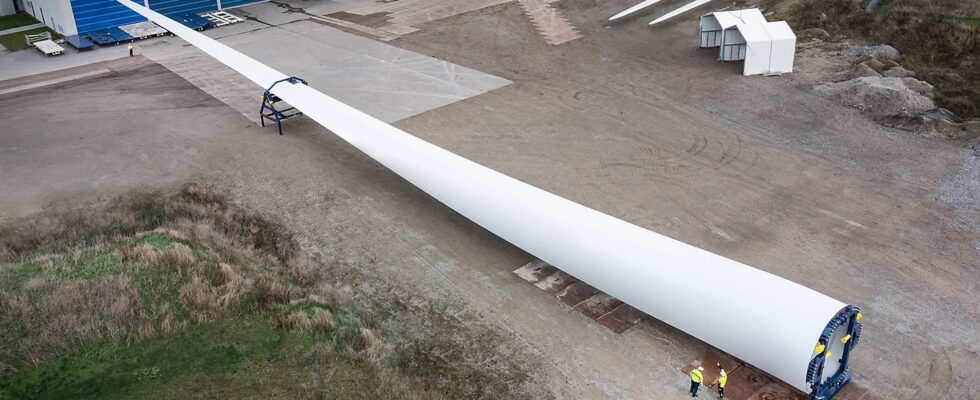Danish wind energy giant Vestas has developed a process to chemically break down the epoxy used in wind turbine blades.
Wind energy is on the rise, and for good reason: it makes it possible to produce electricity from renewable energy that is relatively predictable and, above all, possibly accessible at peak times, unlike solar energy. . In addition, it makes it possible to enhance offshore territories where yields are higher and the inconvenience for populations less significant. However, nothing is perfect, and this sector is no exception. Among its shortcomings, the recycling of wind turbine blades is surely the most highlighted.
Polymers that are difficult to break down
A recognized player in the wind energy sector, Vestas is often at the forefront of technology and regularly breaks records for electricity production. Its huge wind turbines are equipped with huge blades over 100 meters long. These are made of different composite materials that combine strength and lightness, epoxy resin being one of these most essential components. But it is also the most difficult to recycle.
Indeed, this very resistant substance is considered impossible to break down into reusable elements, which leads to a dangerous accumulation of old blades while the construction of wind turbines continues to increase. This is why the Danish company has teamed up with several industrial and academic partners to develop a chemical process capable of solving this problem. Both for current models and for those that already fill many landfills.
A circular economy
Lisa Ekstrand, Vice President of Vestas, said: “JUntil now, the wind industry believed that wind turbine blade material required a new approach to design and manufacturing to be either recyclable or, even better, circular, at the end of its life cycle. . Now we can consider the old epoxy-based blades as a source of raw material. »
In addition to existing stocks, WindEurope estimates that from 2025, each year there will be an additional 25,000 tonnes of blades out of service, and twice as many from 2030. Beyond technological progress, it is also a market that could prove lucrative for the Danish giant, which intends to develop a true circular economy around the construction of wind turbines, more respectful of the ecological issues to which this industry is supposed to respond…
Source : Electrek

50